Aspects and Characteristics of Data Quality
Getting optimal data quality is a challenge for companies, but it's also important if they're going to be competitive and transform internal and external processes to perform better. That way, organizations can be a solid group in the digital transformation and data-driven movement.
To understand and measure data quality, you have to understand its roots. Let's find out more.
What is Data Quality?
Data quality refers to the accuracy, reliability, consistency, and completeness of data within a dataset or database. It measures the degree to which data can be trusted and used effectively for its intended purposes.
High-quality data is free from errors, duplications, and inconsistencies, ensuring that it is relevant and suitable for analysis, decision-making, and other business processes.
To reach a good quality in all your data is essential to know how data is structured, and the following aspects will give you more knowledge about the types of data you must understand to organize the information company.
Types of data
Structured Data: Structured data is highly organized and follows a specific data model or schema. It is represented in a tabular format with rows and columns, where each column represents a specific attribute or field, and each row represents a record or instance. The data values in structured data are well-defined, and relationships between data elements are explicitly established. Relational databases, spreadsheets, and CSV files are common examples of structured data.
Semi-Structured Data: Semi-structured data shares characteristics of both structured and unstructured data. It does not conform to a fixed schema, but it contains some level of organization, often in the form of tags, metadata, or hierarchical structures. Semi-structured data allows for more flexibility compared to structured data since new attributes can be added without altering the entire dataset. Examples of semi-structured data include XML and JSON files, where data is organized with tags or key-value pairs, but not all elements are required to have the same attributes.
Unstructured Data: Unstructured data lacks a predefined structure or organization. It does not fit neatly into rows and columns like structured data, and its format is typically human-readable rather than machine-readable. Unstructured data is often in the form of text-heavy content, such as emails, social media posts, audio files, video files, images, and documents like PDFs. Since there is no explicit structure, extracting meaningful information from unstructured data requires more advanced techniques like natural language processing (NLP), computer vision, or audio processing.
As you can see if you recognize data and classified according to formats, tags, relationships, etc., it will be more efficient to operate with a high volume of information.
Now that you know the types of data you need, let's explore those important characteristics that data needs to reach high-quality standards and provide the insights you need.
Data Quality Characteristics
Data should have a cluster of characteristics that give a better understanding for data specialists and as a consequence better decision-making for stakeholders. Take a peek at the following aspects:
- Data accuracy: Data accuracy refers to the extent to which data values and information correctly represent the real-world objects or events they are intended to capture. Inaccurate data contain errors, mistakes, or discrepancies that can lead to incorrect conclusions or decisions when used for analysis or decision-making. Achieving data accuracy involves rigorous data validation, verification, and data entry processes to minimize errors and ensure the correctness of data values.
- Data reliability: Data reliability pertains to the trustworthiness and consistency of data over time and across different sources or data collection methods. Reliable data can be consistently replicated or obtained under similar conditions, and it remains stable and consistent over multiple measurements or observations. Data reliability ensures that data can be used with confidence in various applications, research, and reporting, as it is free from random variations and measurement errors.
- Data completeness: Data completeness refers to the extent to which all required and relevant data elements are present in a dataset without any missing values or information gaps. Incomplete data can hinder accurate analysis and decision-making, as it may lead to biased or misleading conclusions. Ensuring data completeness involves identifying and addressing missing data, either by data imputation techniques or by improving data collection processes.
- Data consistency: Data consistency refers to the uniformity and coherence of data across multiple datasets or data sources. Consistent data should not have contradictions, discrepancies, or conflicting information when integrated or compared. Inconsistent data can lead to confusion and undermine data reliability. Data consistency is typically achieved through standardized data formats, naming conventions, and data integration practices.
- Data timeliness: Data timeliness concerns the relevance and currency of data in relation to the specific time frame of its use. Timely data is up-to-date and reflects the most recent information available, making it more relevant for decision-making. Outdated data can lead to uninformed decisions and missed opportunities. Maintaining data timeliness involves regular updates, data refreshes, and real-time data integration when necessary.
- Data relevance: Data relevance refers to the degree to which data aligns with the specific goals, questions, or objectives of an analysis or decision-making process. Relevant data is directly applicable to the task at hand, providing meaningful insights and supporting well-informed decisions. Identifying data relevance involves understanding the context of data usage and filtering out irrelevant data that may introduce noise or distractions.
The aforementioned characteristics of data should be optimized if an organization wants to be more competitive in its industries. For this situation, there are platforms that can assist your company to enhance its performance and boost the value of data that you generated every day.
Conclusion
Investing in data quality assessments, data cleansing, and standardized data governance practices will undoubtedly yield significant returns, leading to more accurate insights, smarter decisions, and better outcomes. Data quality is not a one-time endeavor; it requires continuous attention and commitment. By fostering a data-centric culture that values and prioritizes data quality, we empower ourselves to harness the true power of data in an increasingly data-driven world.
So, let us embark on this journey to ensure data accuracy, reliability, completeness, consistency, timeliness, and relevance. With data quality as our compass, we can navigate through the vast sea of information, charting a course toward unparalleled achievements and transformative discoveries. The future is data-driven, and data quality is the key that unlocks its limitless possibilities.
Are you ready to unlock the full potential of your company's data and embark on a transformative journey toward success? Introducing Arkon Data Platform – your ultimate ally in the quest for data-driven excellence. Arkon empowers organizations to harness the true value of their data.
Contact us!



